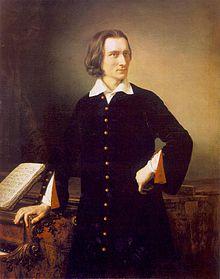You are here
Liszt Adds Romantic Flourishes to Classic Theme in "Totentanz"
Based on the 14th century Gregorian plainchant melody “Dies irae” with daring stylistic innovations, Franz Liszt’s Totentanz presents a virtuoso opportunity for soloist Gleb Ivanov at the Evanston Symphony’s March 16 concert at 2:30 at Pick-Staiger Concert Hall.
Totentanz means “Dance of Death” in English, and it’s based on the Gregorian plainsong “Dies irae,” which depicts the Day of Judgment. Liszt started work on the piece in 1838 and completed it in 1849. Liszt’s student, Hans von Bulow, to whom the work is dedicated, first performed the revised, final version at The Hague in April 1865. Among the many notable pianists to perform the piece was Bela Bartok—whose Dance Suite is also on the March concert program.
Totentanzis comprised of the theme, five variations on the theme—three short ones, the Canonique and a long fugue—and a rousing finale. Liszt added many modernistic features to the chant. The opening is a canonic counterpoint, which features an almost percussive piano part. Totentanz also includes a modern toccata section, where the pianist’s repeated notes beat with intensity, and special sound effects in the orchestra. For instance, there is a col legno section where the strings play with the wooden part of the bow and sound like shuddering or clanking bones. To see a performance of Totentanz, click here.
Join us for this rousing “Hungarian Connection” concert, which also includes Bartok’s Dance Suite and Sibelius’ patriotic Symphony No. 2 in D Major.
